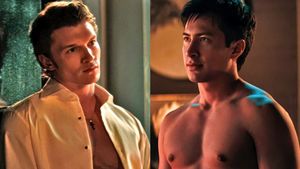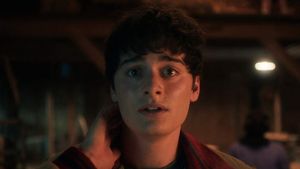DAY ONE: WE THE PEOPLE
Philly's tourism marketing department (which sets standards for gay outreach), uses the slogan "Get your history straight and your nightlife gay." They know of what they speak.
Since you're here, start where our nation did, at Independence National Historical Park, clustered around Independence Mall (bordered by Arch & Walnut Streets, 5th and 6th Streets), in the neighborhood known as Olde City.
It was at Independence Hall (Chestnut Street, between Fifth and Sixth Streets) that the Declaration of Independence was signed on July 4, 1776, followed by the adoption of the Articles of Confederation in 1781 and the Constitution in 1787. Nearly 200 years later, the city's first gay rights demonstrations were held here, every July 4 from 1965 to 1969.
The famously cracked Liberty Bell sits in a glass enclosure at Liberty Bell Pavilion (Market Street between 5th and 6th Streets); the nation's first bank, appropriately titled the First Bank of the United States, presides at 3rd and Chestnut St; and the first meeting of our nation's Congress was at Congress Hall (Sixth and Chestnut Streets).
The National Constitution Center (525 Arch St, Independence Mall; 215-409-6600), opened 2003, honors and explains our nation's most cherished document. The center is a must-see for history buffs, and even those with just a passing interest will come away with a new appreciation.
House museums offer unique insights into early American lives, particularly those of Betsy Ross who sewed our first flag, with 13 stars (239 Arch St; 215-686-1252), and Benjamin Franklin, profiled in the "ghost frame" of his house at Franklin Court (Market St between 3rd and 4th Streets, 215-965-2305). Near Betsy Ross's House, Elfreth's Alley (off Second Street, between Arch and Race streets) is America's oldest street (1702), a tight, cobblestone lane only a block long, of homes almost indistinguishable from an inner-London alleyway of the same period.
The Afro-American Historical and Cultural Museum (Seventh and Arch St; 215-574-0380) is the first of its kind in the country, devoted to African-American art and culture, as well as an important exhibit on racism.
Olde City may be historic, but its restaurants are some of America's trendiest. Design is on the plate and all around you at Buddakan (325 Chestnut St; 215-574-9440; $18-$33), serving highly diverse Asian-inspired cuisine in a festive setting overseen by a giant luminous Buddha. Make reservations WAY in advance, go with a group of friends, and order the sashimi appetizer, which will melt in your mouth.
For a side of history with your lunch or dinner in the Gayborhood, the venerable Venture Inn (255 S. Camac St; 215-545-8731; $15-22) dates from the 19th century; the building was a stop on the Underground Railroad.
After dark, duck behind the big red door of Woody's (202 S. 13th St; 215-545-1893) for a crash course in Gay Philly 101. It's multilevel dance bar in the heart of the Gayborhood, with a stand-and-model gym bunny crowd. Weekends are generally mobbed, but there's mellower two-stepping to C&W music on Sunday nights.
Behind Woody's is the lesbian bar Sisters (1320 Chancellor St; 215-735-0735). Sisters' three stories host more events and activities than all other clubs combined: performances, contests, open bars, karaoke, and a Sunday brunch popular with both gay men and lesbians.
Part One | Part Two | Part Three | Part Four











































































